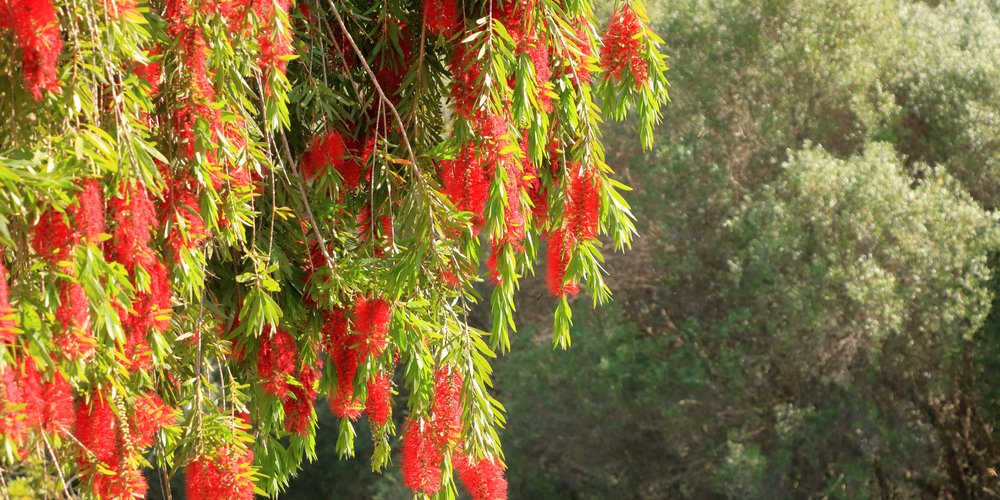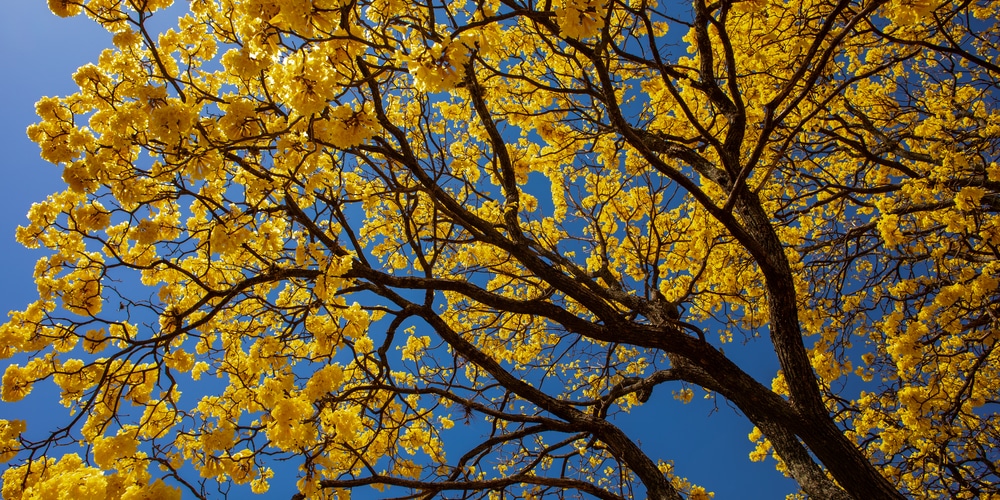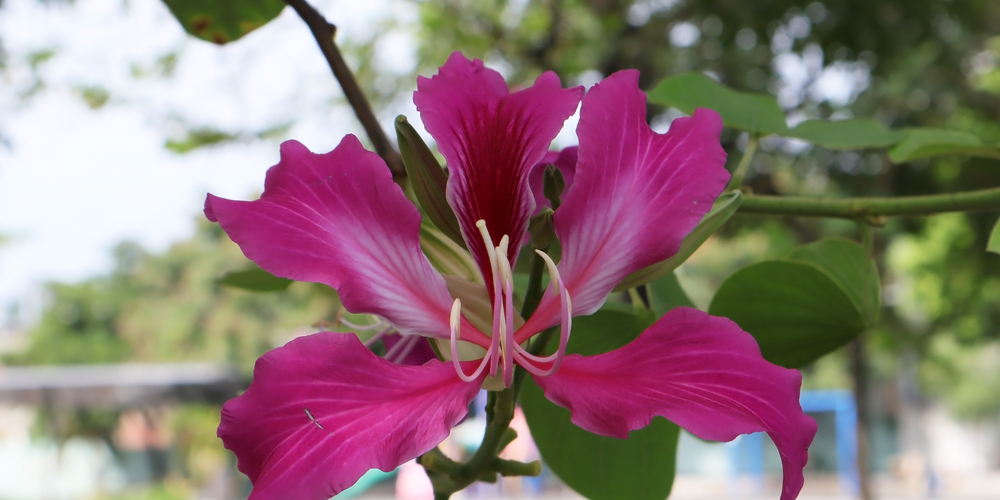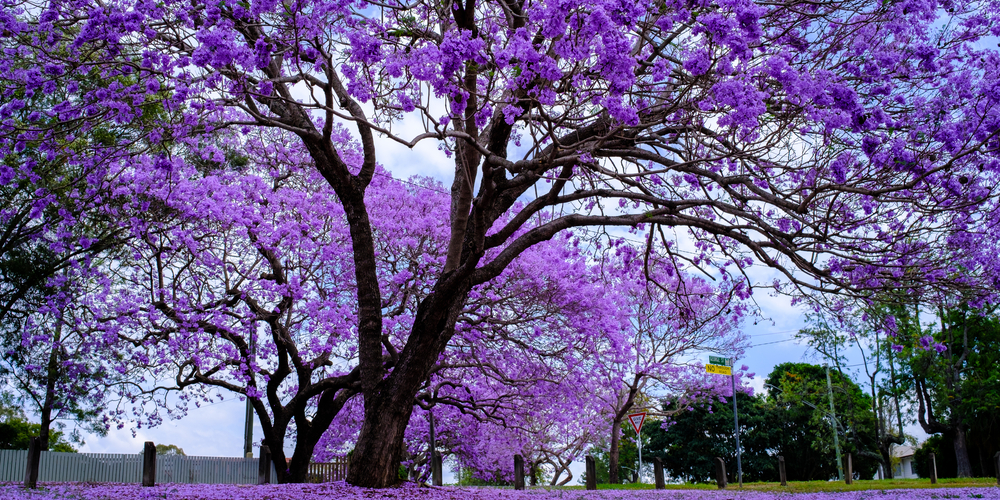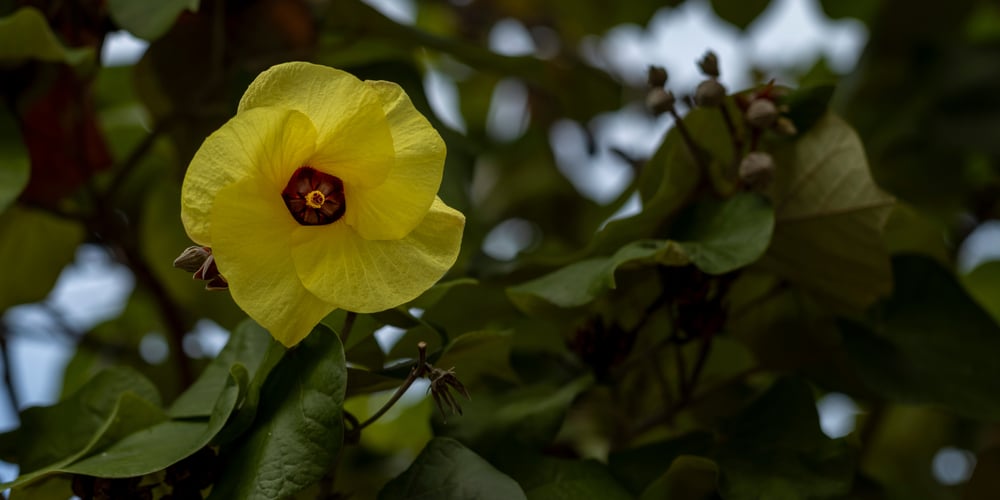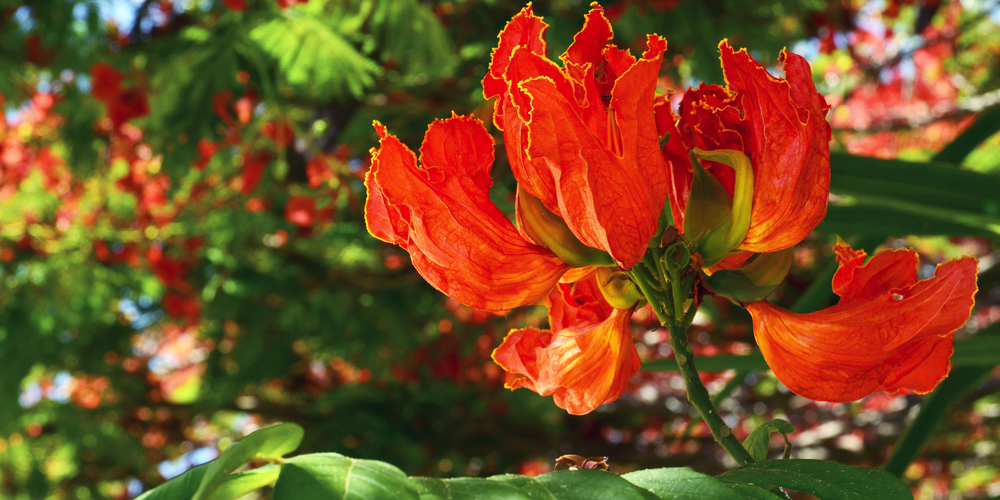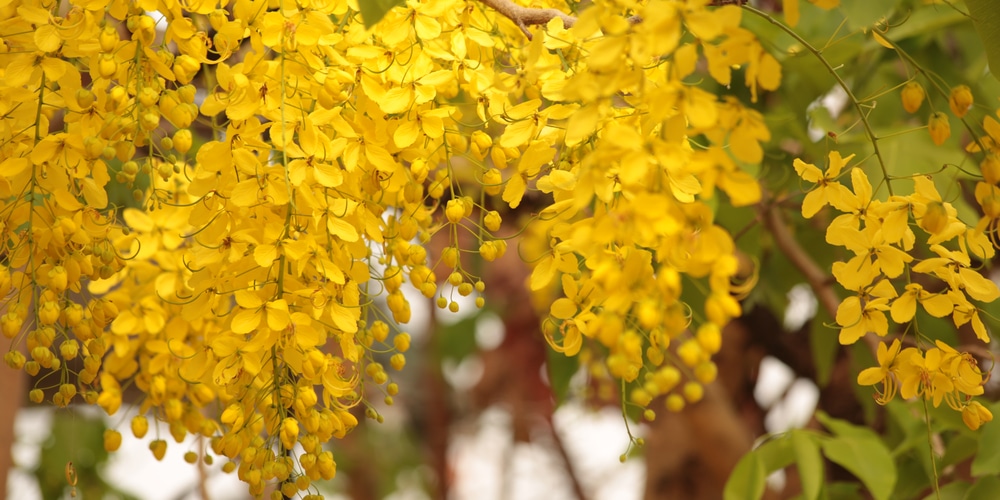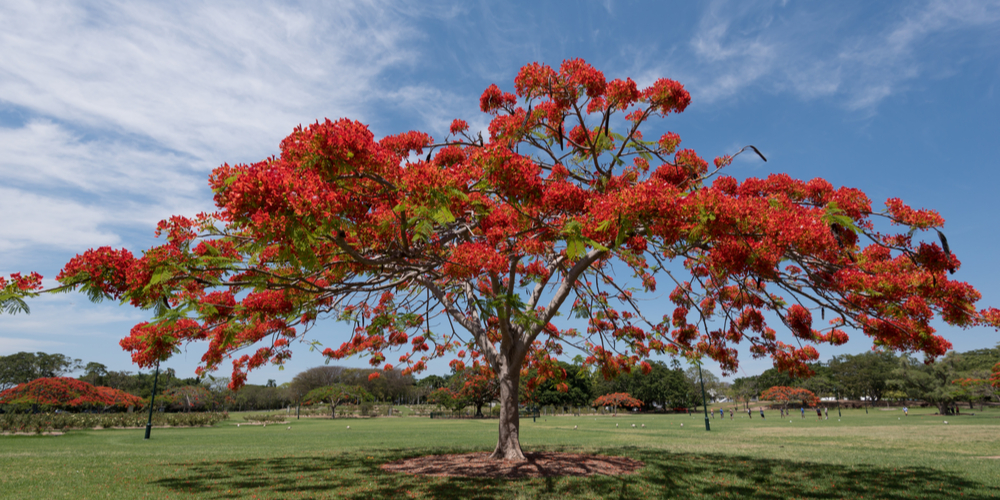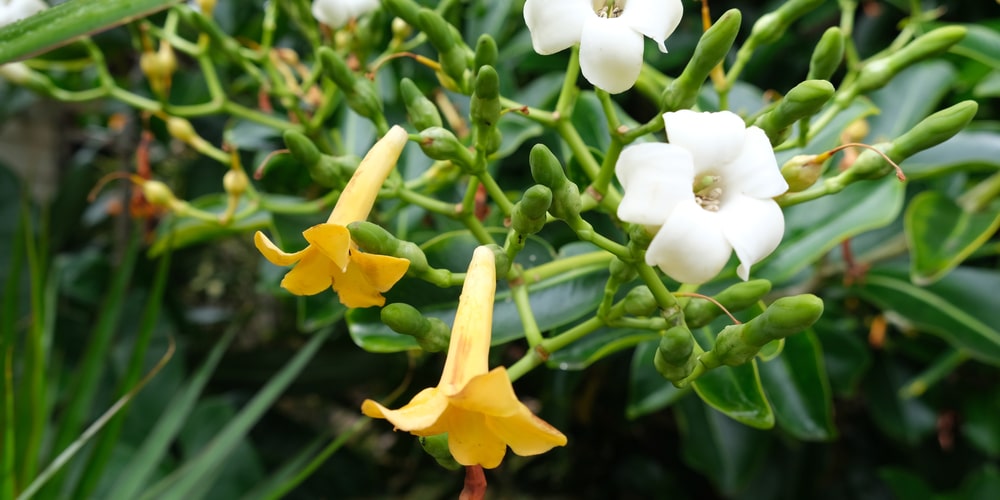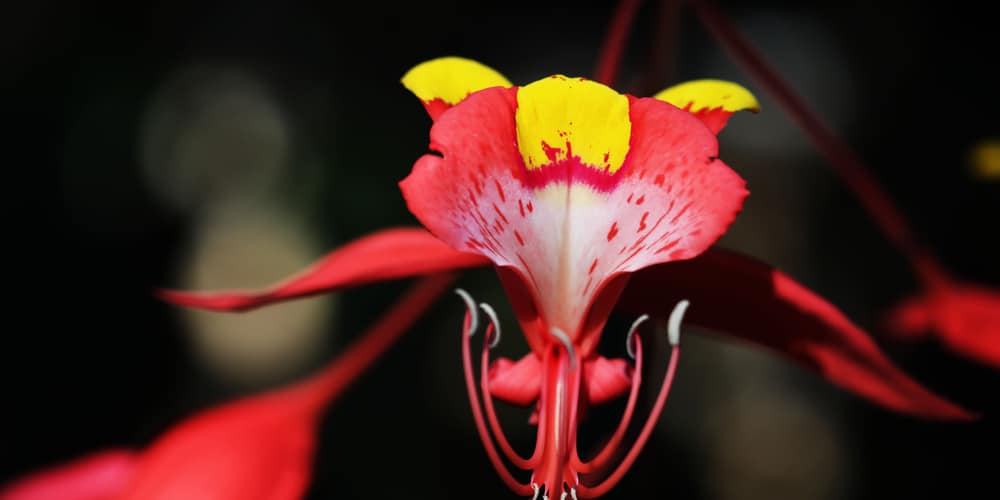Tropical flowering trees are breathtaking and make for a dazzling display of foliage and color in any garden. If you’re lucky enough to live in a region with a warm climate, here are 12 Hawaiian flowering trees you can try in your outdoor space.
Hawaiian Flowering Trees
Bottlebrush
Bottlebrush trees are excellent for starters and those who want a no-fuss flowering tree in their garden. Native to Australia, bottlebrush can be grown as a shrub or a small tree and bring vivid life anywhere you place them.
The plant can grow up to 10 feet but it’s a slow grower. Its evergreen nature means it sticks around at the end of the growing season and comes back without fail.
Yellow Tabebuia
Considered a large stately tree with an instantly recognizable appearance, Yellow Tabebuia are sometimes called trumpet trees because of how it looks.
It produces bright golden yellow flowers at the end of branches as soon as spring arrives to signal the end of the cold season. After that, leaves begin to sprout and soon the tree will be covered with them.
Yellow Tabebuia is a deciduous tree that loves bright direct sunlight. It’s not too picky about soil type and can survive a missed watering or two.
Orchid Tree
Orchid trees in Hawaii are called Bauhinia and have a similar appearance to the orchids found across the globe. In the region, Bauhinia has a long bloom life and cycle, with a variety of flower hues that range from red, white, salmon and even purple.
To grow an orchid tree you will need a spot that gets full sun and a well-draining soil. Settle it in right and you’ll have no issues getting it to grow big and produce lots and lots of blooms.
Jacaranda
A crowd favorite among plant enthusiasts, Jacaranda boasts numerous purple blooms en masse when spring season comes. It’s native to South America and can grow up to 40 feet in height.
It’s worth noting that the flowers tend to stick around longer, and that the tree is highly tolerant of a wide range of environments. That said, you should put it in a location that gets plenty of sunlight and water every now and then.
Hau Tree
It’s perfectly normal to mistake a Hau tree for a hibiscus plant- it’s a hibiscus variety in tree form, after all. The wood from a Hau tree is used to craft many different items, including kindle wood, canoe supports, cordage and more.
You can plant the Hau tree as an ornamental in your yard and let it grow up to around 20 feet. Like the hibiscus the large-petaled flowers only last a day or two before being spent.
Plumeria
Plumeria trees are very popular in Hawaii mainly because of their blooms. You see, the cheerful and bold flowers are used to make lei and perfume, among other things.
The tree is native to Central America and Mexico and is adaptable to a variety of soil and environmental conditions. It seems to thrive where there’s a dry and hot climate than colder regions. The flowers bloom from April to November and can be put in a vase or allowed to show off outdoors.
African Tulip
African tulips are considered invasive in Hawaii, which speaks volumes about its vigorous growth and adaptability. However, if you’re looking for a mass of orange blooms atop dark green foliage then you should definitely plant one in your yard or garden.
The tree is evergreen and easy to care for as long as it gets full sun. At closer look you’ll find the flowers to be shaped like tulips, hence its given name.
Cassia Shower Tree
An attractive Hawaiian flowering tree, Cassias can usually be seen in parks, public gardens and open landscapes. It’s native to Southeast Asia and India and features several interesting varieties, such as the Rainbow Shower tree.
The Shower Tree can reach up to 35 to 50 feet in height, with blooms that appear as innumerable bubbles of peach and red atop the foliage. What’s perfect is that the flowers tend to stick around and don’t leave a mess on the ground when they’re done.
Royal Poinciana
Often called flame trees, the Royal Poinciana sprouts bright-red, strangely-shaped flowers that appear to be fire when viewed at a distance. The foliage naturally forms an umbrella shape with the fiery blossoms cascading down.
The Royal Poinciana doesn’t play well with other trees, shrubs and plants, so put it a good distance away from them in your yard. It grows quickly as long as it’s situated in full sun and rich soil.
Puakenikeni Tree
A tough and versatile Hawaiian tree that boasts large leaves and scented flowers, the Puakenikeni tree is a favorite in the region and grows in virtually every garden.
The evergreen shrub can reach a whopping 50 feet in height when exposed to a tropical environment. The flowers are showy and used to make leis, and you can put them indoors too for a spot of nature. Make sure to plant them in a sunny spot and provide regular watering to see its best version.
Pride of Burma
Amherstia nobilis touts lance-shaped, bright red flowers in a sea of mint-green leaves. It’s native to Burma and India and can grow up to 40 feet and have a spread of around the same.
You’ll want to put the Pride of Burma in bright full sun and well-draining soil. It’s worthy to note that you’ll also need to water it regularly for the best foliage and flowers.
Hawaiian Gardenia
Hawaiian Gardenia is native to the region and grows only to a maximum height of 12 feet or so. Nau is similar to the puakenikeni in terms of foliage and flowers and is often used as a decorative piece for outdoor and natural landscapes.
The tree exudes a mild scent that will complement your yard or garden well. As it loves tropical climate, those who are interested in growing Hawaiian Gardenia should plant it in rich, well-draining soil and in a spot that gets full sunlight.
Related Article: Trees That Start with H
